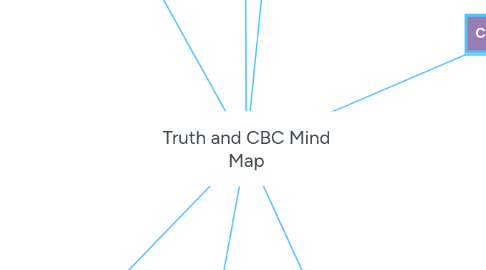
1. Social Consensus literature
1.1. Look at past social consensus research to understand previous conceptualisations and operationalisations
1.1.1. E.g. - Lewandowsky, Gignac & Vaughan, 2013 --> scientific consensus and climate change attitudes - Visser & Mirabile, 2004 --> attitude strength, durability and resistance to persuasive messages in homogeneous vs. heterogeneous social networks - Weaver, Garcia, Schwarz & Miller, 2007 --> how people comprehend "group opinion / consensus" and familiarity effect - Ross, Buehler & Karr, 1998 -->people used social consensus to valid conflicting memories more than sensory detail
1.2. Social comparison theory (i.e. informative vs. normative influence) Festinger, 1954
1.3. Social relationships and attitude change (i.e. people are more confident in their beliefs if others share them) Newcomb, 1943
2. Coherence literature
2.1. Referential theory of coherence (i.e. coherent references as causal explanation for repetition-induced truth effect) Unkelbach, Koch, Silva & Garcia-Marques, 2019
2.2. Coherence and traumatic memories (i.e. implication that coherence is not a stable property of memory, retrieval factors) Taylor & Garry, 2019 manuscript
2.3. Look at past coherence research to understand previous conceptualisations and operationalisations
2.3.1. E.g. - Gerrie, Belcher & Garry, 2006 --> role of schemas when recalling a story - Johnson-Laird, 2012 --> inference with mental models, coherent frame leads to more truth judgments - Pennington & Hastie, 1992 --> juror decision-making, witness narrative presented as a coherent story lead to more truth ratings - Leavitt & Christenfeld, 2013 --> "spoilers" lead to the story making more sense and being more enjoyable because was more coherent (semantics come into play)
3. Credibility literature
3.1. Analytical processing of source credibility (i.e. expertise, affliliation, past statements, likely motives etc.) Eagly & Chaiken, 1993
3.2. Intuitive processing of source credibility (i.e. fluency and familiarity) Weisbuch & Mackie, 2009
3.3. Look at past credibility research to understand conceptualisations and operationalisations
3.3.1. E.g. - Newman et al., 2014 --> nonprobative information and truth judgments i.e. pronounceability of sources' name - Lev-Ari & Keysar, 2010 --> nonprobative information and truth judgments i.e. sources' accent - Brown, Brown & Zoccoli, 2002 --> repetition of faces can increase ratings of honesty and sincereity
3.4. Prototypicality???
3.5. Depends on what the individual believes is 'credible'
4. Choice-based Conjoint (CBC) Analysis literature
4.1. "Getting Started with Conjoint Analysis" book by Bryan Orme
4.2. Methodologically-relevant
4.2.1. - Ryan, 1996 --> CBC to look at patients' decision-making in regards to handicap health outcomes - Hainmmueller, Hopkins & Yamamoto, 2013 --> attributes of a would-be presidential candidate, and attributes of immigrants you would want accepted into the US - Luce, Payne & Bettman, 1999 ---> "importance" attributes vs. "emotional" attributes for when purchasing a car - Cunningham et al., 2013 --> looking at information sources young people would rather use if they were seeking information about anxiety / depression (to hopefully increase help-seeking behaviours) - Zimmermann et al., 2013 --> patient preferences for outcomes of depression treatment (e.g. loss of energy/fatigue
4.3. Conceptually-relevant
4.3.1. - Farley, Thompson, Hanbury & Chambers, 2013 --> healthcare innovations, used 'strength of supporting evidence' attribute (with 4 levels) - Qundus & Paschke, 2019 --> user trust in social media, used (i would argue) 'social consensus' and 'credibility' - Iyer, 2018 --> CBC in litigation
5. Review Truth Literature
5.1. Understand the proposed 5 truth criteria model
5.2. E.g. Schwarz, 2004 --> meta-cognitive experiences Schwarz & Newman, 2017 --> 5 criteria review Schwarz, Newman & Leach, 2016 --> 5 criteria review
6. Compatibility literature
6.1. Cognitive consistency Abelson et al., 1968
6.2. Information processing approach (i.e. more likely to accept a claim that is compatible with own prior beliefs) Wyer, 1974
6.3. Look at past compatibility research to understand previous conceptualisations and operationalisations
6.3.1. E.g. - Kim, Park & Schwarz, 2010 --> compatibility with feelings in product evaluation context - Erickson & Mattson, 1981 --> "How many animals of each kind did Moses take on the Ark?" familiarity effect - Song & Schwarz, 2008 --> when biblical question is in difficult-to-read font people are more likely to notice the discrepancy - Schwarz & Newman, 2017 --> compatibility with affect, angry people may find angry messages credible - Eryn and Mary's work???? - Compatibility of general knowledge - Marsh = Judging Truth - Loftus et al. 2019 - False memories in the Irish abortion election were more likely to be endorsed when it aligned with political beliefs, in that more likely to endorse false memories that made the political opponent look bad
6.4. Balance theory (i.e. evaluative consistency, in which relationships between elements [e.g. people] are balanced when their attitudes [likes, dislikes] toward each other match in a relevant aspect) Heider, 1946
7. Supporting Evidence literature
7.1. Meta-cognitive experiences can bias decision-making (i.e. perceptions of evidence = assumption is the more evidence that exists, the easier it should be to think of some) Tverky & Kahneman, 1973
7.2. Analytic processing of evidence --> effortful, cognitively demanding process, more likely to trust / believe if large body of evidence supports the claim e.g. peer-reviewed articles, substantiated news report etc. (Schwarz & Newman, 2017)
7.3. Intuitive processing of evidence --> less demanding, easy/quicker processing, making a judgment based on how easy it is to retrieve or obtain some pieces of evidence (i.e. retrieval fluency)
7.4. Look at past perceptions of supporting evidence research to understand previous conceptualisations and operationalisations
7.4.1. E.g. - Strack & Stepper, 1993 --> recall examples of assertiveness with furrowed brow - Schwarz et al., 1991 --> 4 assertiveness examples vs. 12 - Sanna, Schwarz & Stocker, 2002 2 different outcomes for the British and Nepal War vs. 10 different outcomes
